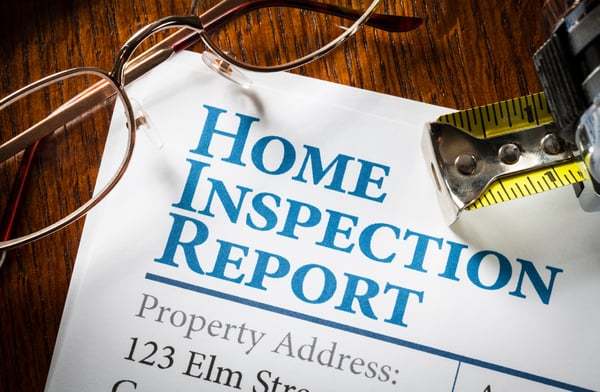Radon is a naturally occurring radioactive gas produced when uranium, thorium, and radium break down in soil, rocks, or water.
After it breaks down, it's released into the air.
Radon is odorless, tasteless, and invisible, so there's no way to know if you're breathing it in.
When you inhale radon outside, it's typically harmless because it can't accumulate at elevated levels.
Problems occur when radon accumulates indoors.
Being exposed to high levels of radon can be hazardous to your health.
In the article below, we will discuss why radon is dangerous at high levels.
Table of Contents
- What's A Safe Level Of Radon Gas?
- Why Radon Gas Is Dangerous At High Levels
- What Are The Symptoms of Radon Exposure
- Prevention
- Radon Eliminator

What's A Safe Level Of Radon Gas?
This is an easy question to answer - there is no safe level of radon gas.
Any radon exposure has the potential to cause lung cancer, especially over long periods of time.
The lower the level of radon, the lower your risk of lung cancer will be. Therefore, the best level of radon is zero.
Most people will get a higher dose of radiation from the radon in the home than they will anywhere else combined.
Depending on where you live, the radon levels of the air you breathe could be as high as .75 picocuries per liter (pCi/L).
The average of outdoor radon levels in the United States is .4 pCi/L.
The National Academy of Sciences has estimated that outdoor radon levels may cause a fraction of the radon-induced lung cancer deaths each year.
Your risk of lung cancer increases considerably with exposure to higher radon levels, especially indoors.
The environmental protection agency recommends that radon levels inside of your home should be below 4 pCi/L.
But again, the only safe level is zero.
Lung cancer risk increases about 16% per 2.7 pCi/L increase in radon exposure.
Radon is frequently brought up when one begins searching for a new home. Read our blog post: "What Should I Know About Radon Before Buying a House?"
Why Radon Gas Is Dangerous At High Levels
Believe it or not, in the early 20th century, doctors actually thought radon gas was beneficial to health.
People would pay money to spend time in what was called a radiotorium so they could receive elevated levels of radon.
Other companies even tried to add radon to water and sell radon infused water, but radon's short half-life meant it would be gone by the time the water got to people.
It wasn't until much later that researchers discovered the negative health implications of radon exposure.
In the 1940s and 1950s, companies who set up mines didn't implement ventilation systems.
This led doctors to attribute lung cancer in miners in the Czech Republic, South Australia, and Southwestern U.S. to radon inhalation.
Even though people realized the dangers of radon, radon-induced lung cancer in miners was a significant hazard until the 1970s.
When you breathe in radon, it gets into the lining of your lungs and gives off radiation.
Over time, radiation exposure can damage the cells in your lungs and lead to lung cancer.
Behind cigarette smoking, radon is the second leading cause of lung cancer.
If you're in a home with elevated radon levels and you smoke, your chances of developing lung cancer are very high.
It's estimated that about 21,000 people die each year from lung cancer related to radon.

What Are the Symptoms of Radon Exposure?
There aren't any "traditional" symptoms of radon.
There's no way to tell right away if you've been inhaling radon or not.
Unfortunately, the only way most people find out they've been exposed to high radon levels is if they develop lung cancer after many years of exposure.
If you develop lung cancer, it likely starts as a nagging cough, shortness of breath, or wheezing that you can't get rid of.
You may also experience chest pain, cough up blood, or weight loss.
If you notice any of these symptoms, please call your doctor as soon as possible.
There aren't any tests you can take to see if you're breathing in too much radon, and as of now, there is no treatment that can remove it from your body.
The only way to know if you're being exposed to radon is to test your home and any other areas you frequently visit.
But again, if you start experiencing any symptoms of lung cancer, visit your doctor right away.
Prevention
It's estimated that as many as 1 in every 15 homes in the United States has elevated radon levels.
Fortunately, radon test kits are widely available, and there are professional radon mitigation companies that can test your house for radon and lower your radon level if it's elevated.
Each radon kit has a collector included.
You should leave the collector from your radon testing kit in the lowest habited room of your house for 2-7 days if it's a short-term test.
A long term test can be left in the room for 90 days or more.
After being exposed to the room long enough, you will send your collected sample to a laboratory for evaluation.
If your radon levels are high (higher than 4 pCi/L), there are several things you can do to bring them down.
The first is called sub-slab-depressurization. This consists of a vent pipe system with a fan that pulls radon from under your house and vents it to the outside.
You can also improve the ventilation in your home, allowing the air in your home to move freely.
A radon sump pump system is when a pipe is inserted into your sump pump that pulls air and radon away from your home.
And finally, positive pressurization is a system that continually blows fresh, filtered air into your home to clear out the radon inside.
Making your home airtight will not remove the radon that's already in the house, and you'd be surprised how hard it is to make your home airtight.
You have to actively remove the radon from your home.
You can hire a radon mitigation company to do the heavy lifting for you for added peace of mind.
They will come in and test your home, and if they find elevated radon levels, they will discuss the best ways to remove it with you.
When you're dealing with something as serious as the cause of lung cancer, it's not a bad idea to let the professionals handle it.

Radon Eliminator
The team at Radon Eliminator understands the risks of radon gas at elevated levels.
If you've never had your home tested for radon, there is no better time than now to get it tested.
You and your family could be breathing in elevated levels of radon without ever knowing it, which could eventually lead to lung cancer.
Radon Eliminator can test your home. If necessary, they can install a radon mitigation system to lower the radon levels in your home
To take action and get started with Radon Eliminator, click the button below for a discounted test.





